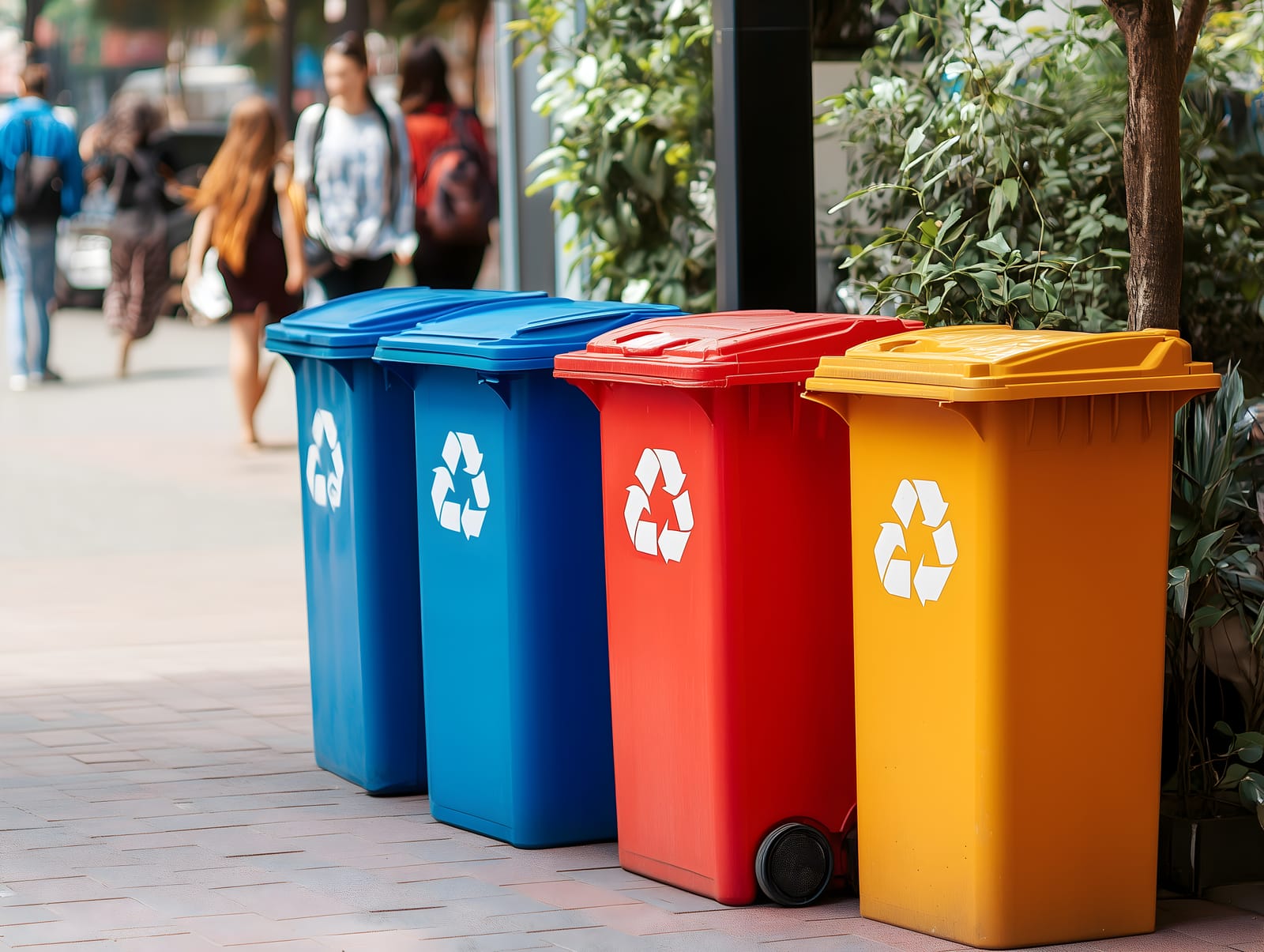It’s a familiar moment of uncertainty in kitchens across Canada. You’re holding an empty plastic container, looking from the small, cryptic number on the bottom to the blue bin in the corner, and you ask the question: “Can this actually be recycled?”
Many of us engage in “wish-cycling”—tossing an item in the bin hoping it’s recyclable, wanting to do the right thing. But this good intention is often overshadowed by a cynical thought: does it all just end up in the landfill anyway?
The journey of our recycling is more complex, more industrial, and more fragile than most of us imagine. Understanding that journey is the key to making the system work. This is the full story of what really happens after the blue bin leaves your curb.
Part 1: The Journey of Your Blue Bin
Recycling is not magic; it’s a global commodity business. Your plastic bottle only gets a new life if it can be collected, sorted, cleaned, and sold to a manufacturer who wants to buy it.
- Step 1: Collection: This is the part we all see. Trucks collect the mixed recyclables from our homes and transport them to the next, most crucial, stop.
- Step 2: The MRF (Materials Recovery Facility): At the MRF, your jumble of materials is sorted. This high-tech process uses conveyor belts, rotating screens to separate paper, powerful magnets to pull out steel, and electric currents to repel aluminum. Optical sorters use infrared light to identify and separate different types of plastic. Human workers are also essential, pulling out contaminants to ensure quality.
- Step 3: Baling and Selling: Once sorted into clean streams (e.g., cardboard, #1 PET plastic, aluminum), the materials are compressed into large, dense bales. These bales are commodities, sold to buyers in North America and around the world who will turn them into new products.
- Step 4: Remanufacturing: At a specialized mill or factory, the bales are broken down. Paper is pulped to create new paper products, plastic is melted into pellets to form new containers, and aluminum is melted down to make new cans—a process that uses about 95% less energy than making aluminum from scratch.
Part 2: The Full Story – The Challenges
The recycling system is powerful but also delicate. Its success is constantly threatened by a few key challenges. The scale of the problem is significant, as highlighted in recent reports from Canada’s Auditor General on plastic waste.
- Contamination: This is the single biggest problem. When we put non-recyclable items in the bin—like food waste, plastic bags, or greasy pizza boxes—we contaminate the clean materials. A batch of paper mixed with broken glass and half-empty ketchup bottles is worthless and, as investigations have shown, will be sent to the landfill.
- The Problem with Plastics: Not all plastics are created equal. The numbers inside the chasing arrows symbol identify the type of plastic resin. While #1 (PET, like water bottles) and #2 (HDPE, like milk jugs) have strong markets, others are much harder to recycle. Black plastic is particularly problematic, as many optical sorters can’t “see” it against a black conveyor belt.
- Market Volatility: Because recycled materials are commodities, their prices fluctuate. A successful recycling program depends on finding buyers, which sometimes means dealing with global markets where the final destination and actual recycling of the materials can be difficult to trace. If prices crash, municipalities may be forced to landfill materials because they simply can’t find a buyer.
Part 3: A Simple Guide to Recycling Right
The success of the entire system depends on what we do in our own homes. Every municipality has slightly different rules, so it is always best to check your local city or town’s website for their specific guide. However, some best practices are universal.
- Myth vs. Reality: Rinsing Containers. Reality: Yes, you need to give containers a quick rinse. Food and liquid are major contaminants. They don’t need to be sparkling clean, but they should be empty and relatively free of residue.
- Myth vs. Reality: Pizza Boxes. Reality: A clean pizza box (or the clean top half) can be recycled with cardboard. The greasy, food-stained bottom half should go in the compost or garbage, as the oil contaminates the paper recycling process.
- Myth vs. reality: Bottle Caps. Reality: The advice on this has changed. The current best practice in most places is to empty the bottle and screw the plastic cap back on. The caps are too small to be sorted on their own, but when attached to the bottle, they get recycled with it.
Conclusion
So, what really happens to your recycling? For the most part, it does get turned into new things, saving a tremendous amount of energy and raw materials. But the system is not perfect. It is an industry that depends on clean materials from us and stable markets to sell them.
By taking a few extra seconds to ensure we are putting the right things in the bin—clean and correct—we are not just “wish-cycling.” We are making a direct contribution to a more sustainable, circular economy.

